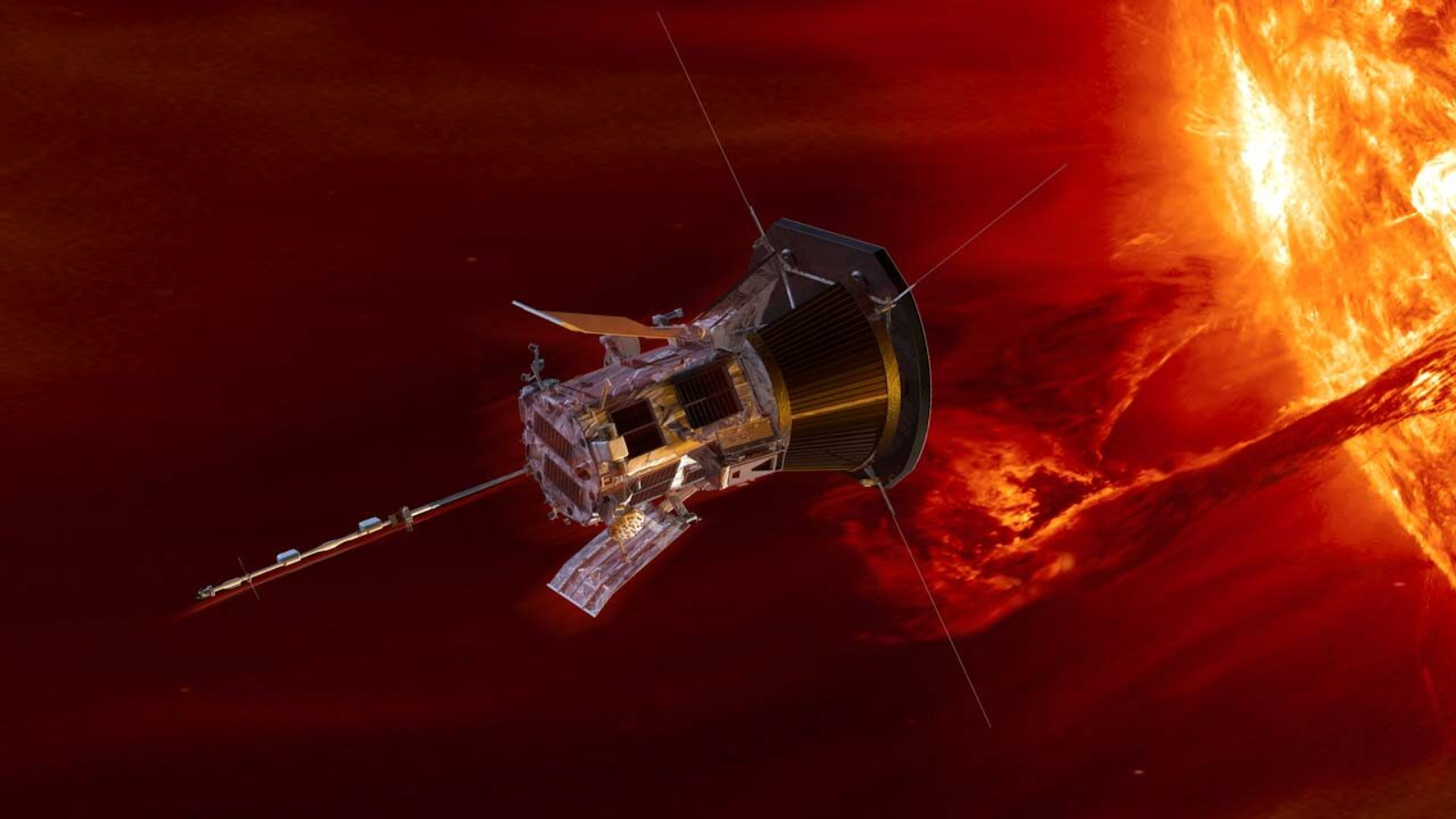NASA's Parker Solar Probe finds fresh clues to decades-old mystery surrounding the sun
Sometimes, not finding what you're looking for is an important answer in itself.

For decades, scientists have puzzled over why the sun's outer atmosphere, or corona, heats up as it moves further from the sun's surface.
Now the long list of possible explanations has been trimmed down by one thanks to data collected by NASA's Parker Solar Probe, the fastest human-made object, which has repeatedly skimmed the sun as it hunts for clues to solve the so-called "coronal heating mystery."
During the probe's first brushes past the sun, its instruments detected abrupt reversals in the direction of the sun's magnetic fields. Scientists call such instances "switchbacks" and suspect they play a role in heating the corona, primarily by releasing magnetic energy packed within them as they move within the sun and in space.
Related: 3 sun mysteries we still haven't cracked
"That energy has to go somewhere, and it could be contributing to heating the corona and accelerating the solar wind," study co-author Mojtaba Akhavan-Tafti of the University of Michigan said in a statement.
The coronal heating mystery refers to the fact that the sun's outer atmosphere, the corona, is hundreds of times hotter than its "surface," the photosphere. That is despite the fact the photosphere is millions of miles closer to the sun's core where the nuclear fusion that provides our star's heat and energy occurs.
Depite being cooler than the corona, the photosphere is responsible for the vast majority of the light from the sun, completely "washing out" light from the solar atmosphere. Thus, the solar corona can only be seen when light from the photosphere is blocked by an eclipse or by using a special instrument called a coronagraph.
That means to study the corona, the Parker Solar probe braves temperatures of around 2,500 degrees Fahrenheit (about 1,400 degrees Celsius) to get up close and personal with the sun.
Get the Space.com Newsletter
Breaking space news, the latest updates on rocket launches, skywatching events and more!
Akhavan-Tafti and his team scoured data collected from over a dozen laps Parker did around our stars, searching for just where the switchbacks began, which is crucial to understanding their influence on the corona.
However, the sought-after features were nowhere to be found, at least inside the corona. Instead, the probe's data showed switchbacks are a common occurrence in the solar wind near the sun.
The finding, which suggests the corona-warming switchbacks likely don't begin at the sun's surface, rules out one of two leading hypotheses on the switchback origin.

Scientists think there could still be a trigger mechanism that contributes heat to the sun's outermost portion. One such mechanism could be explosive collisions of chaotic magnetic field lines on the sun's surface, said Akhavan-Tafti.
During such collisions, the magnetic fields vibrate like plucked guitar strings and accelerate plasma in the solar wind to high speeds. This could distort magnetic waves into switchbacks near the sun. If some of those waves lose steam before they exit the sun, however, their energy would be dumped in its upper layers, heating up the corona.
"The mechanisms that cause the formation of switchbacks, and the switchbacks themselves, could heat both the corona and the solar wind," Akhavan-Tafti said in the news release.
This research fine-tunes our understanding of how the sun works and can eventually help scientists predict, detect, and prepare for solar storms.
This research represents the latest result that has emerged from NASA's Parker mission since it began in 2018.
Last month, the Parker Solar Probe completed its 20th close approach to the sun, inching within 5 million miles (8 million kilometers) from its surface, the Johns Hopkins Applied Physics Laboratory, which operates the spacecraft, said in a recent statement.
The probe has since flown outward, but it will sweep back to the same distance on Sept. 30 and a million more miles further out from the sun on Christmas Eve this year. Scientists hope data from these trips will reveal more about why the million-degree-hot corona is the way it is.
The team's research was published on July 29 in The Astrophysical Journal Letters.
Join our Space Forums to keep talking space on the latest missions, night sky and more! And if you have a news tip, correction or comment, let us know at: community@space.com.

Sharmila Kuthunur is a Seattle-based science journalist focusing on astronomy and space exploration. Her work has also appeared in Scientific American, Astronomy and Live Science, among other publications. She has earned a master's degree in journalism from Northeastern University in Boston. Follow her on BlueSky @skuthunur.bsky.social








